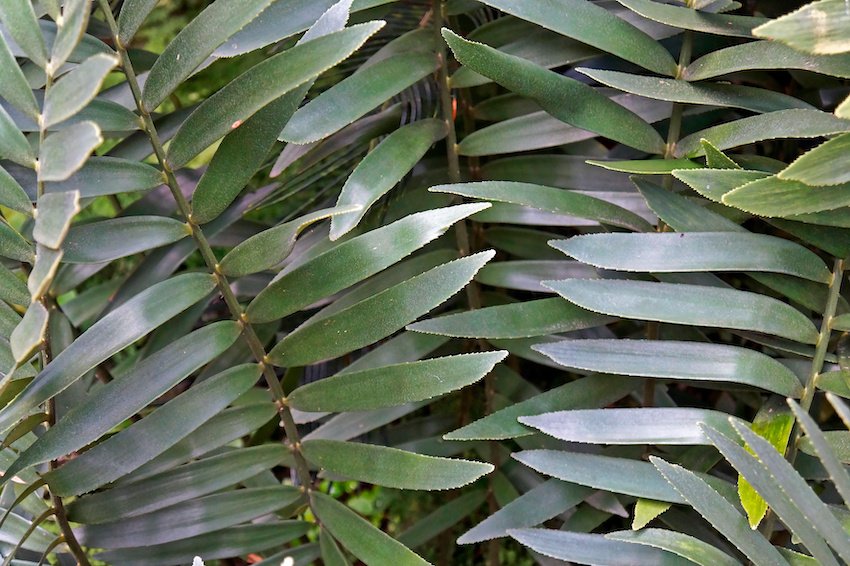Coontie Palm
This small, tough, woody cycad native to the southeastern United States, the Bahamas, Cuba, and the Cayman Islands is not actually a true palm, but rather a palm-like cycad with fern-like characteristics. Its unique leathery, but feather-like, evergreen leaves change from light to dark green as they mature. Its distinctive large underground storage root and ability to produce suckers that can grow into new plants make it a great groundcover option. Despite its delicate appearance, this plant is a hardy and versatile choice, thriving in filtered sunlight to part shade and tolerating full sun, cold weather, salt, drought, and coastal conditions.
This small, tough, woody cycad native to the southeastern United States, the Bahamas, Cuba, and the Cayman Islands is not actually a true palm, but rather a palm-like cycad with fern-like characteristics. Its unique leathery, but feather-like, evergreen leaves change from light to dark green as they mature. Its distinctive large underground storage root and ability to produce suckers that can grow into new plants make it a great groundcover option. Despite its delicate appearance, this plant is a hardy and versatile choice, thriving in filtered sunlight to part shade and tolerating full sun, cold weather, salt, drought, and coastal conditions.
This small, tough, woody cycad native to the southeastern United States, the Bahamas, Cuba, and the Cayman Islands is not actually a true palm, but rather a palm-like cycad with fern-like characteristics. Its unique leathery, but feather-like, evergreen leaves change from light to dark green as they mature. Its distinctive large underground storage root and ability to produce suckers that can grow into new plants make it a great groundcover option. Despite its delicate appearance, this plant is a hardy and versatile choice, thriving in filtered sunlight to part shade and tolerating full sun, cold weather, salt, drought, and coastal conditions.
Zamia floridana
Native: native to Florida
Hardiness Zone: 8B - 11
Light Range: plant grows in part shade/part sun
Soil Characteristics: alkaline; sand; acidic; loam
Tolerances: high drought tolerance; good salt tolerance
Landscape Use: border; mass planting; accent; attracts butterflies; suitable for growing indoors
Height: 2 - 4 feet
Spread: 3 - 5 feet
Growth Rate: slow
Leaf Size: 4-8 inches
Leaf Persistence: evergreen
Wildlife: butterflies
Roaming Roots Tips:
Too much water will cause the Coontie Palm to decline.
The alata caterpillar feeds only on the coontie. It devours foliage at a rapid rate for about two weeks and then disappears. Plants recover with new foliage.

